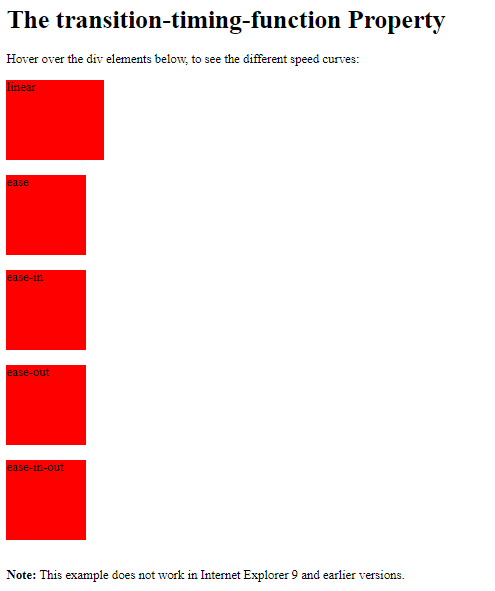
1.Transistion CSS Example-1
<!DOCTYPE html>
<html>
<head>
<style>
div {
width: 100px;
height: 100px;
background: red;
transition: width 2s;
}
div:hover {
width: 300px;
}
</style>
</head>
<body>
<h1>The transition Property</h1>
<p>Hover over the div element below, to see the transition effect:</p>
<div></div>
<p><b>Note:</b> This example does not work in Internet Explorer 9 and earlier versions.</p>
</body>
</html>
<!DOCTYPE html>
<html>
<head>
<style>
div {
width: 100px;
height: 100px;
background: red;
transition: width 2s;
}
#div1 {transition-timing-function: linear;}
#div2 {transition-timing-function: ease;}
#div3 {transition-timing-function: ease-in;}
#div4 {transition-timing-function: ease-out;}
#div5 {transition-timing-function: ease-in-out;}
div:hover {
width: 300px;
}
</style>
</head>
<body>
<h1>The transition-timing-function Property</h1>
<p>Hover over the div elements below, to see the different speed curves:</p>
<div id="div1">linear</div><br>
<div id="div2">ease</div><br>
<div id="div3">ease-in</div><br>
<div id="div4">ease-out</div><br>
<div id="div5">ease-in-out</div><br>
<p><b>Note:</b> This example does not work in Internet Explorer 9 and earlier versions.</p>
</body>
</html>